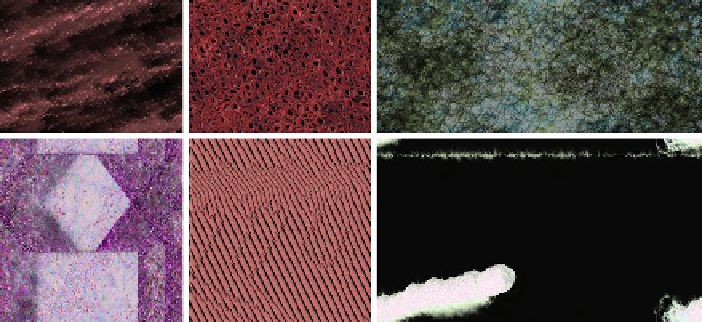Information Technology Reference
In-Depth Information
Fig. 13.4
A selection of images evolved by users employing the
EvoEco
texture generating soft-
ware
creativity-lite generated biomorphs were tested against an encoded complete statisti-
cal version of our creativity measure, a very high proportion of the images generated
were found to be creative by this measure. Hence it seems fair to conclude that the
simplified creativity-lite search is a good approximation of the complete, but in-
tensive, computation required to apply our measure in full. Finally, the interactive
algorithm for generating biomorphs consistently produced many more creative in-
dividuals than the random technique, but less than the creativity-lite measure. This
indicates that our measure goes some way towards representing human preferences.
Were the humans evolving for creative results that our measure would appreciate?
This test was not set up to answer such questions. How well does our measure cor-
respond to the general human appreciation of creativity? This was explored in a
subsequent test, discussed next.
13.8.2 Testing Creative Software Against Human Concepts
of Creativity
In order to determine the extent to which our definition of creativity reflected human
interpretations of the term, Kowaliw et al. conducted a survey, the details of which
can be found in (Kowaliw et al.
2012
). Visitors, originally to a gallery installation,
and later to a website, were invited to evolve images using texture generating soft-
ware,
EvoEco
, that operated on the principle of aesthetic selection: users selected a
parent image from 16 textures displayed to them. This was then used to generate 16
offspring images as described below, and the process repeated until the user decided
it was time to stop. Some sample images generated by users appear in Fig.
13.4
.
Of the 16 offspring generated from a user-selected parent image, 15 were gener-
ated either by occasional mutation (a small variation in the parameters that generate

